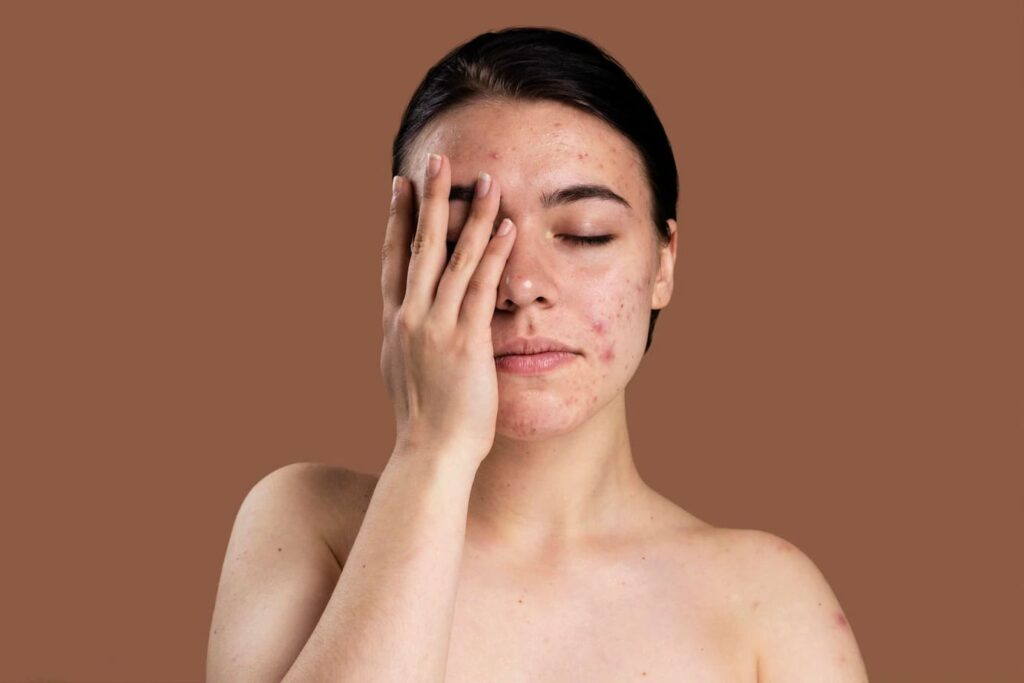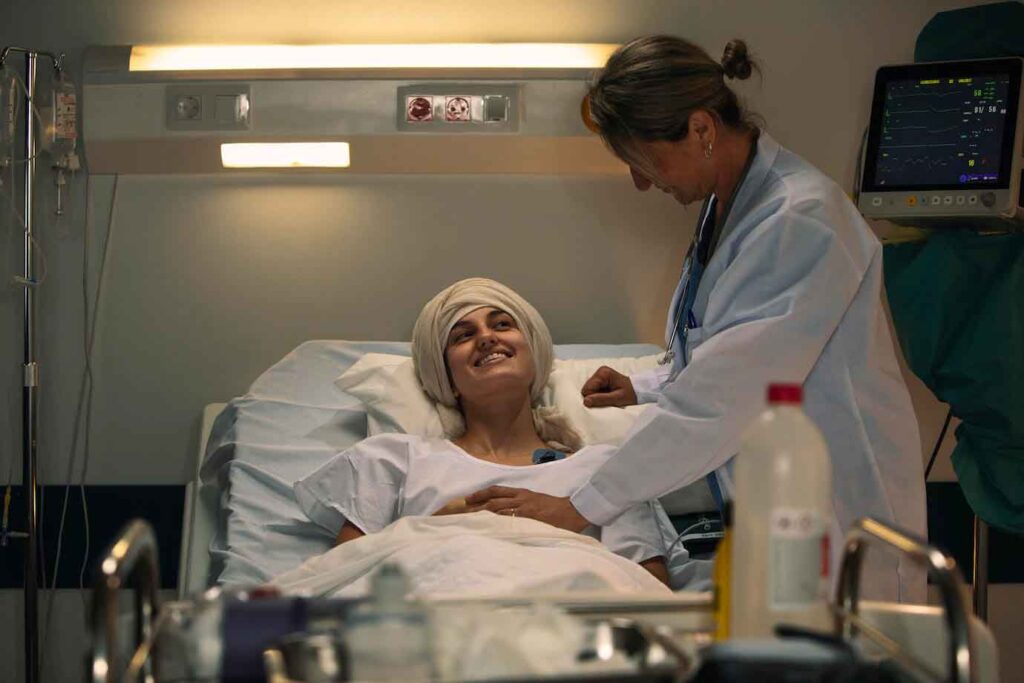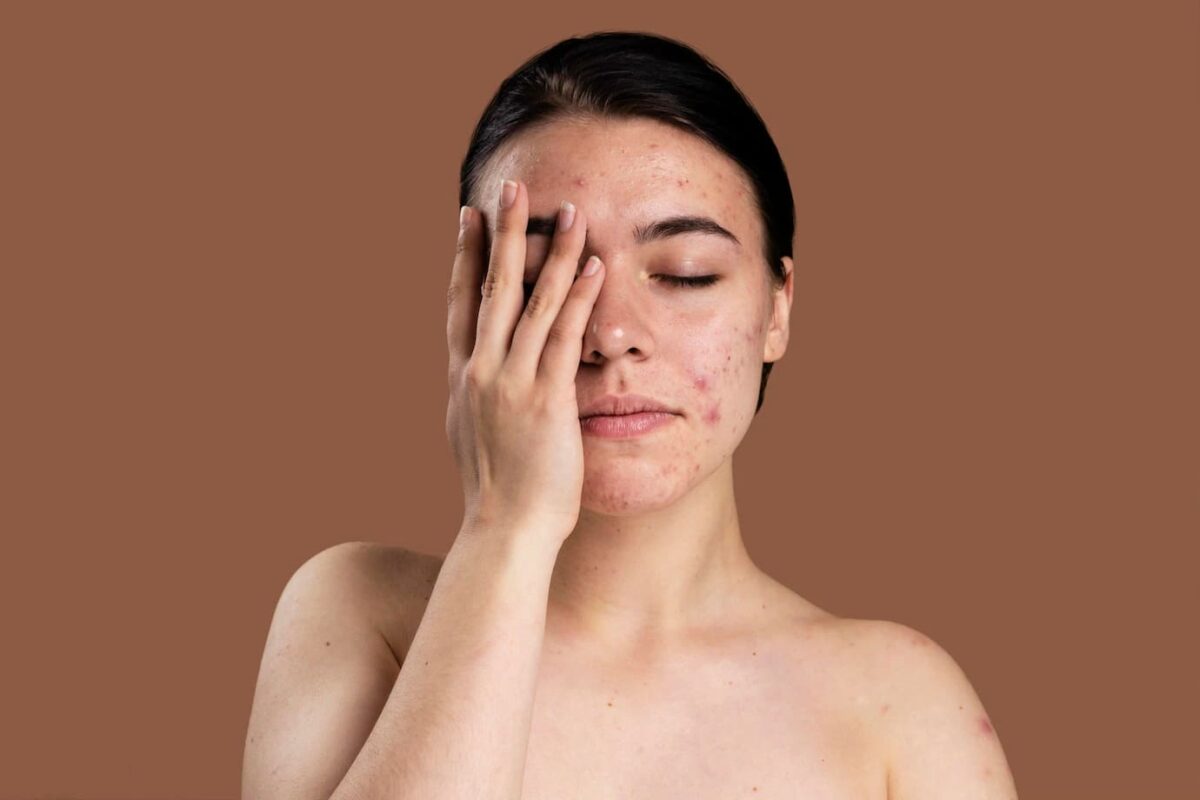Skin cancer happens when the skin cells begin to grow abnormally. Based on the type of cell involvement, skin cancer is of different types.
Although skin cancer is the most common cancer. Skin cancer is not completely preventable, about 1 in 5 Americans will develop it at some point in their lifetime.
But there are steps to reduce the risk of getting skin cancer.

What Are The Causes Of Skin Cancer?
As we all know that the skin is the largest organ in the body. The skin has many layers that protect us against sunlight, heat, cold, injury, and many types of infection. Within those many layers, there are two main layers epidermis and dermis that act as protectors. The epidermis layer has three types of cells :
- Squamous cells.
- Basal cells.
- Melanocytes.
The dermis layer contains :
- Blood.
- Hair follicles.
- Glands.
The causes of skin cancer are :
- Exposer to ultraviolet(UV) rays (direct sunlight and artificial tanning UV from beds).
- Use of chemicals that cause cancer.
These factors cause skin cells to develop abnormal DNA, which then causes the growth and development of cancer cells.
What Are The Different Types Of Skin Cancer?
The type of skin cell affected by cancer determines what kind of cancer it is :
- Basal cell carcinoma :- Skin cancer that happens in the basal cell of the skin. It is the slowest growing and most common type of cancer.
- Squamous cell carcinoma :- Cancer that develops in the squamous cell of the skin. It is not life-threatening, but it can become dangerous if it’s left untreated.
- Melanoma :- Cancer that develops in melanocytes of the skin. This is the life-threatening and most dangerous type of skin cancer. It is the most common type of skin cancer and also causes the majority of skin cancer deaths.

What Are The Symptoms Of Skin Cancer?
Basal cell carcinoma symptoms
Basal cell carcinoma occurs in sun-exposed areas of the body, such as the face or neck. Symptoms are :
- A pearly or waxy bump.
- A flat, flesh-colored, or brown scar-like lesion.
- A bleeding sore that heals and returns automatically.
Squamous cell carcinoma symptoms
Squamous cell carcinoma also occurs on sun-exposed areas of the body, such as the face, ears, and hands. People with darker skin have more chances to develop squamous cell carcinoma in areas that aren’t often exposed to the sun. Symptoms are :
- A firm, red nodule.
- A flat lesion with a scaly surface.
Melanoma symptoms
Melanoma does not directly connect to sunlight, it can develop anywhere on the body. Existing moles can become cancerous. Melanoma mostly appears on the face and neck of affected men. In women, most often develops on the lower legs. Melanoma affects people of any skin tone. In people with darker skin tones, cancer occurs on the palms or soles, fingernails, or toenails. Symptoms are :
- A large brownish spot with darker speckles.
- A bleeding mole that changes in color, size.
- A small and painful lesion with an irregular border that appears red, pink, white, blue, or blue-black.
- Dark lesions on the palms, soles, fingertips, toes, or on mucous membranes of the nose, vagina, or anus.

The best way to prevent skin cancer is to stay vigilant and monitor the skin. If you have any of the above-mentioned symptoms, it’s a good idea to connect with a doctor. Our experts at Texas Specialty Clinic will assist with the best treatment for skin cancer. If anyone of you has such symptoms, connect at (469) 545-9983.
How To Reduce The Risk Of Skin Cancer?
Prevent skin cancer from developing the following things :
Get skin cancer screenings
Even if you don’t have any skin concerns, it’s a good idea to have yearly skin cancer checks with Texas Specialty Clinic. Our specialists will be able to see areas of your body you can’t easily monitor.
Specialists of Texas Specialty clinic will evaluate any moles or other skin growths for the possibility of skin cancer. If a mole has suspicious features and looks like it may be malignant (cancerous), removing it early may prevent it from spreading to other areas of the body.
Use sunscreen
Always apply sunscreen when you are going to be in direct sunlight.
Practice sun safety
The sun can do damage to the skin in just 5 minutes, so it’s essential to do everything to protect the skin from UV rays.
Here are some excellent sun safety tips :
- Wear sunglasses.
- Wear appropriate clothing.
- Wear a hat.
Avoid tanning beds
Staying out of the sun and using a tanning bed increases the risk of skin cancer. The risk of cutaneous melanoma increases by 80 percent if you start using a tanning device before the age of 30.
Indoor tanning is carcinogenic to humans. Tanning beds increase the risk of melanoma even if you do not burn.
Can Retin-A And Vitamin B-3 Protect Skin From Cancer?
Retin-A
Retinol products like Retin-A can increase the creation of new skin cells, which may prevent skin cancer. However, Retinol can make the skin much more sensitive to sun exposure. This means if someone is using retinol products, one has to be extra cautious when outside for long periods of time.
Vitamin B-3
Vitamin B-3 lowers the risk of skin cancers in some high-risk individuals. It reduces inflammation, builds proteins in the skin, and improves the moisture content of the skin. Vitamin B-3 protects the skin from environmental damage, including sunlight.
The Bottom Line
Skin cancer is very common nowadays. The most effective steps to prevent skin cancer include limiting your time in the sun, wearing sunscreen, avoiding tanning beds, and getting regular skin cancer screenings.

